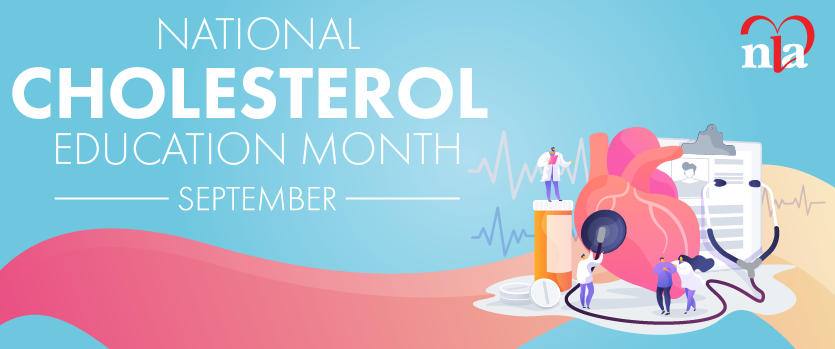The American College of Cardiology (ACC) and the American Heart Association (AHA) — in collaboration with the National Heart, Lung and Blood Institute (NHLBI) — published their evidence- based hyperlipidemia guidelines on the treatment of blood cholesterol to reduce atherosclerotic cardiovascular diseases (ASCVD). Even though this major guideline revision after the Adult Treatment Panel III report in 2002 has some unique aspects, such as including stroke as a cardiovascular outcome and removing low-density lipoprotein (LDL) targets, it does not add much new information regarding the management of hypertriglyceridemia.1
By definition, hypertriglyceridemia occurs when the level of triglyceride reaches ≥ 150 (150-199 is borderline high, 200-499 is high, and ≥ 500 is very high).2 An elevated triglyceride level is not a target for therapy, per se, unless when ≥ 500 (especially if ≥ 1,000) and the recommendation is to reduce the levels to <500 with a goal of preventing pancreatitis with drugs (fibrates, high- dose omega-3 fatty acids, and nicotinic acid).1,2 When combined with a statin, though fenofibrate is considered safer than gemfibrozil, the guidelines recommend “against use of non-statins in any statin-tolerant patient for preventing cardiovascular outcomes” and that “the combination of a statin with any fibrate should be avoided because of an increased risk of toxicity.”1,2
Controversy on Hypertriglyceridemia Management — the Data Behind the Guidelines
The treatment of asymptomatic hypertriglyceridemia is controversial. No strong evidence exists for a direct causal relationship between cardiovascular disease and hypertriglyceridemia.3 The Heart Protection Study 2-Treatment of HDL to Reduce the Incidence of Vascular Events (HPS2-THRIVE) study and the Atherothrombosis Intervention in Metabolic Syndrome with Low HDL/High Triglycerides: Impact on Global Health Outcomes (AIM-HIGH) trial showed that the addition of niacin to statins did not improve major vascular events when the LDL cholesterol levels were controlled.4,5
The Action to Control Cardiovascular Risk in Diabetes (ACCORD) lipid trial did not show any significant reduction in fatal cardiovascular events with fenofibrate, but a possible benefit for patients with high- baseline triglycerides and low high-density lipoprotein (HDL) was observed.6
High Triglycerides — a Neglected Topic for Cardiovascular Prevention?
The guidelines rightfully support statin use while recommending against use of non-statins, mostly based on randomized control trials. To a primary care provider assessing a patient for the first time, the risk assessment tool might be handy. But do the same rules apply to an endocrinologist for whom most patients are either insulin resistant or diabetic?
In patients with metabolic syndrome, insulin resistance, or diabetes, lipid metabolism is altered and hypertriglyceridemia occurs in conjunction with low HDL and high LDL, increasing the risk of atherogenecity.7 Although hypertriglyceridemia has not yet been shown to be an independent risk factor in the general population, it is an integral part of atherogenic dyslipidemia in high-risk patients with diabetes (type 1 or 2).7 Similar mechanisms operate in patients with lipodystrophy, in which a deficiency in adipose tissue impairs fat storage and adipose tissue function, making those patients vulnerable to cardiovascular diseases. Therefore, these groups of patients might require special consideration in terms of hypertriglyceridemia.
The expert panel mentioned that “non- statin therapies do not provide acceptable ASCVD risk reduction compared to their potential for adverse effects in the routine prevention of ASCVD” and did not provide clear recommendations for diabetics.
Why Avoiding Non-Statins May Help in Some Ways
One major argument to support the new lipid guidelines is that adjuvant use of fibrates or niacin along with statins may prompt physicians to reduce statin doses in an attempt to lower the risk of side effects such as myopathy and could, as a result, lower statin efficacy. Avoiding non-statins can, therefore, be beneficial in maximizing statin dose.
Another positive note is the emphasis on the role of lifestyle and controlling risk factors such as diabetes, lack of exercise and hypertension in reducing cardiovascular events instead of adding a non-statin.
Is There Evidence to Support Treating
Pancreatitis as a Primary Goal? The National Institutes of Health consensus development conference in 1983 concluded that the risk of pancreatitis is present in triglyceride levels > 500 in spite of lacking evidence to support the same.2 There are no studies excluding the role of alcohol and gallstones in assessing the risk of hypertriglyceridemia in pancreatitis, and there is very limited data to suggest that treatment of triglyceridemia ≥ 500 improves susceptibility to pancreatitis.8,9,10
With lack of proper evidence, is it advisable to treat hypertriglyceridemia ≥ 500 with non-statins to try to prevent pancreatitis instead of with statins to prevent cardiovascular outcomes, especially in those with derangement of glucose metabolism?
Which Non-Statins to Use?
Evidence from the Veterans Affairs High- Density Lipoprotein Intervention Trial (VA- HIT) for gemfibrozil showed a 24-percent reduction in relative risk of cardiovascular events compared to placebo,11 but the current guidelines recommend “gemfibrozil should not be initiated with statin therapy due to increased risk for muscle symptoms and rhabdomyolysis” and that “fenofibrate may be considered along with a low or moderate intensity statin only if benefits from ASCVD risk or triglycerides above 500 outweighs risks.”
This is in contradiction to the results of the Fenofibrate Intervention and Event Lowering in Diabetes (FIELD) trial, which showed no significant improvement in major cardiovascular outcomes with use of fenofibrate, the effects of which could have been masked by concomitant statin use.12
How Do the New Guidelines Change our Practice?
Some hospitals and formularies are considering changing drug policies for non-statins. Patients with active cardiac disease who were on fibrates or niacin in addition to statins are being taken off the non-statins by some physicians, while other physicians — after discussing with their patients the lack of supporting data on outcomes — have taken a cautious approach because of possible favorable lipid changes in dyslipidemic groups in the ACCORD and AIM-HIGH trials.5,6
Future Research
We need randomized control trials to evaluate alternate therapies for cardiovascular risk reduction which may be difficult to implement in this statin era. We also need studies to compare the use of non-statins with lower doses of statins and to look at the role of statins versus non- statins in isolated hypertriglyceridemia ≥ 500 in cardiovascular risk reduction.
Disclosure statement: Dr. Pai has no disclosures to report.
References are listed on page 33 of the PDF.






.jpg)
.png)











